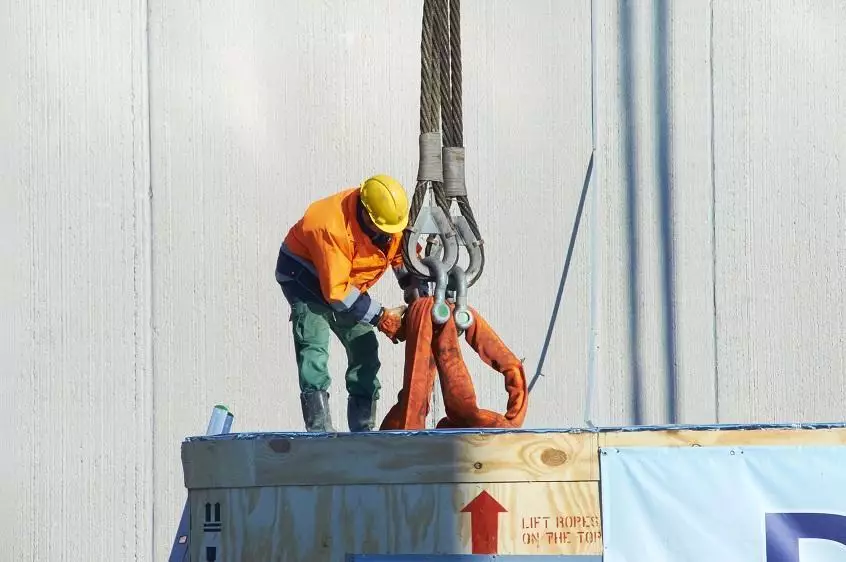Rigger and signal person
A rigger and a signal person are two different positions that complement each other. The rigger is responsible for hanging and unhooking the transported items, while the signalperson sends messages about the work progress to the crane operator. Signals can be audible, light, or manual; the selection of appropriate communication methods depends on the size of the device used and the working conditions. It is worth knowing that the same parameters affect whether two positions are filled (rigger and signal person) or if they can be performed by one person. This is possible only in situations where the regulations of the Office of Technical Inspection or the manufacturer of the device do not specify the number of people needed to operate a machine. It also depends on the accident risk assessment and safety in the workplace.

Who is the training intended for?
Work at the rigger and signal person position is related to the transport of cargo using cranes, overhead traveling cranes, and other lifting devices. These positions are classified as high-risk jobs. The fall of transported cargo can lead to serious injuries and even the death of employees. This is why it is so important for the employer that the employees performing work related to the transportation of cargo and the people supporting them are competent. They should undergo health and safety training and have the necessary knowledge of the principles of safe work when operating lifting devices and skills.
Who is eligible to become a qualified rigger or a signal person?
Candidates for a signal person or a rigger should:
- be 18 years old,
- have knowledge of standards and legal regulations,
- be in good health, i.e., have good eyesight, hearing, reflexes, and dexterity,
- be physically able to operate the lifting equipment.
During training, the candidate will learn:
- suspension technique, signaling technique, and signaling codes
- rules for the selection of lifting accessories and equipment,
- rules for giving oral instructions when acoustic equipment is used (e.g., radio),
- safety rules when performing work with the use of cranes,
- rules of cooperation with the crane operator
What is a rigger or a signal person responsible for?
A person performing the job of a rigger or a signal person is responsible for:
- suspending and unhooking cargo to and from the crane's load device and for using the appropriate lifting gear and equipment
- initiating the intended movement of the crane and load (if applicable),
- transmitting signals to the crane operator.
We also organize overhead crane courses and regular crane courses, which will allow for a better understanding of the principles of cooperation between the rigger and the machine operator.
Online training for riggers
We offer rigger training, during which participants learn all theoretical and practical issues related to working as a rigger or signal person. To meet the expectations of customers, we have prepared an online course for riggers, which will prepare you to perform your duties as effectively as the traditional one. During the online course, trainees will learn legal regulations regarding the position of a rigger or signal person, the techniques of suspending and removing cargo, communication methods and codes, and the rules of conduct in the event of an accident or failure.
As an employer, you cannot allow an employee without proper training, skills, and authorization to work in these positions. Otherwise, you expose yourself to the consequences referred to in Art. 220 of the Penal Code. You can face 3 years of imprisonment in a situation where an employee is exposed to loss of health or life. Only an irresponsible person could ignore such an argument!











